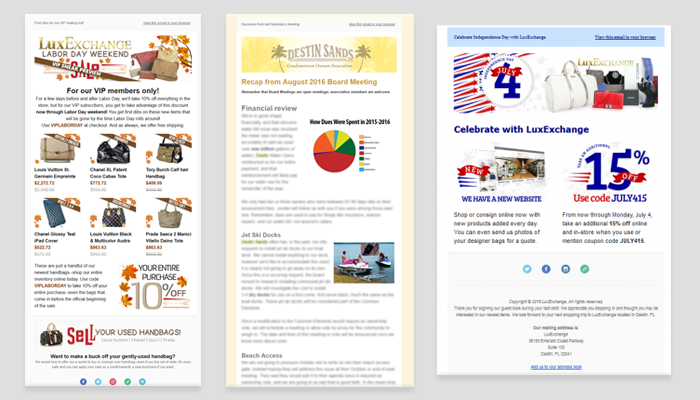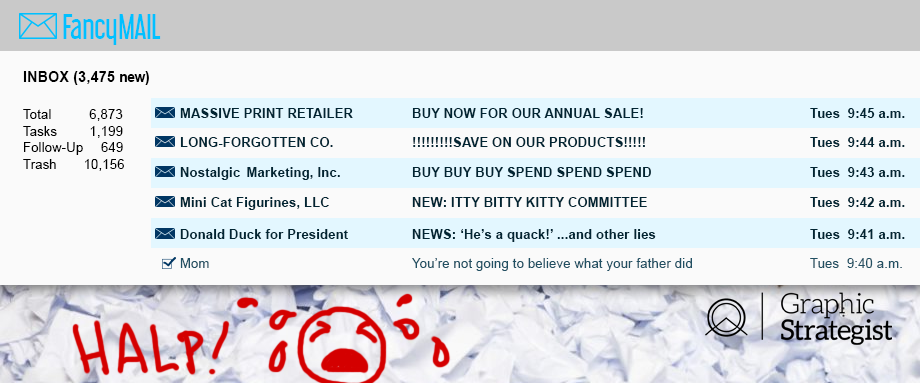
I send out lots of “e-blasts” for clients. Some clients want my opinion on whether or not it’s still relevant, some don’t. Regardless of that, e-mail is still a great communication tool.
But e-mail is changing.
The youngins have said, “I don’t check my e-mail unless you tell me you’re sending me something.” Many younger generations don’t use e-mail the way other generations do. If you’re going to continue to use e-mail for marketing, there are some things you should know.
- The old rules don’t apply
- People want real interaction. Use a monitored reply address, not that ‘no reply’ or ‘admin’ baloney.
- Cold-selling via e-mail is a rookie mistake and fodder of the 90’s. Work on building trust and relationships through e-mail.
- You don’t need a ‘call-to-action’ in every button, headline, or subject, which leads us into…
- Consumers are getting less tolerant of sales pitches: you’ve gotta be less “spammy” and “sales-y”
- Just stop with the ‘Clickbait‘ subject lines, for crying out loud! This tactic hurts consumers’ trust in your brand. I would even venture to say consumers will resent you for clickbait titles.
- Authenticity matters: have a personality and unique voice. Speak and write like a human being, not a bot.
- Make sure the e-mail focuses on the consumer, not the product. Be helpful, offer relevant information the consumer is interested in (which is usually themselves). Be reader-centered.
- Who your buyers are matters whether or not e-mail still works
- Really consider that point; just because someone hands you their e-mail address doesn’t mean they are a buyer. Sometimes they’re just being nice, sometimes it’s a throwaway e-mail address because they think you’re going to send them junk.
- Many younger people consider e-mail passé. ‘Old people’ use Facebook, and ‘older than old’ people use e-mail. Yes, younger generations have e-mail accounts, but they don’t check them regularly or rely on them to keep up with people the way previous generations did and do.
- Conclusion: It’s in flux. You’ve got to change your approach.
- Be authentic. Have conversations. Use humor!
- Be brief: I’ve got 30 unread e-mail in my inbox right now–most of which are newsletters–and I don’t wanna scroll through some company’s long-winded sales pitch. I’m probably just gonna delete it.
- Be useful: Stick to one topic or goal. Is this a business recap that directly affects your readers? Are you offering an exclusive deal? Remember why your reader signed up to receive e-mails.
Here’s the thing: you have to think of e-mail the same way you think of social media: Who is your market? What is your goal? Do you have time for it? Can you adapt? And one final point: when you Google “e-mail marketing tips,” be sure and check the date on the article. You don’t exactly want an article posted in 2009 for tips on e-mail marketing.

